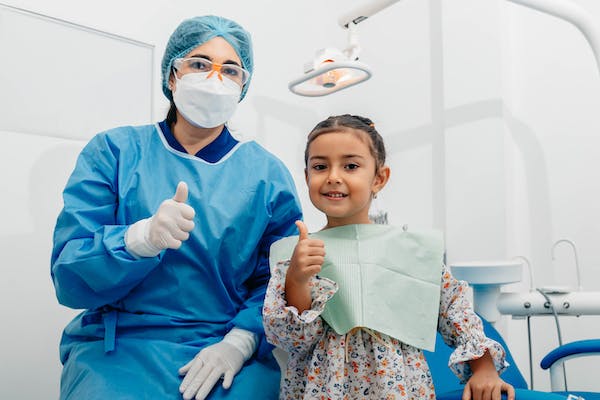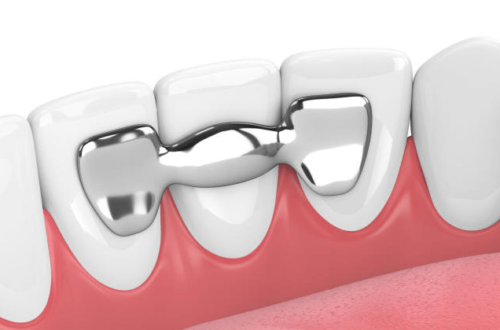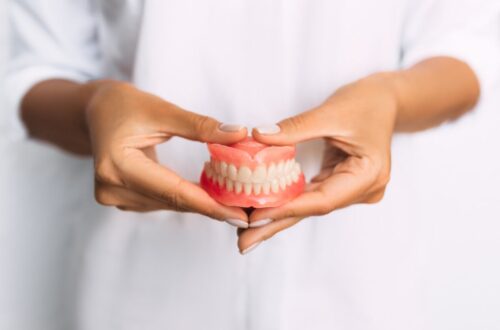
The Future of Dentistry. Discovering the Advancements of an Innovative Dental Prosthesis System
Welcome to the fascinating world of dentistry, where innovation is revolutionizing the way we approach oral health and dental prosthetics. In recent years, tremendous advancements have been made in the field, paving the way for a future that promises enhanced functionality, aesthetics, and comfort in dental prostheses. Gone are the days of ill-fitting dentures and limited options for tooth replacement. With the introduction of an innovative dental prosthesis system, patients can now experience a whole new level of oral restoration. This cutting-edge technology combines the latest in digital dentistry, advanced materials, and precise manufacturing techniques to create prostheses that are not only durable and natural-looking but also customized to fit each individual’s unique needs. Join us as we delve into the exciting world of dental prosthetics and explore the endless possibilities that lie ahead in the future of dentistry.
Do you dream of a new, beautiful smile? A perfect solution will be the reconstruction of teeth with the use of the Poznan prosthesis service. Qualified specialists from the Stankowscy-Białach dental clinic will do it for you!
Traditional dental prosthesis vs. innovative dental prosthesis systems
Traditional dental prostheses, such as dentures, have long been the go-to solution for patients with missing teeth. However, these solutions often come with a host of limitations. Ill-fitting dentures can cause discomfort, difficulty in speaking and eating, and can even lead to bone loss in the jaw over time. Additionally, traditional prostheses may not provide the aesthetic appeal that patients desire, often appearing artificial and unnatural.
In contrast, innovative dental prosthesis systems offer a range of benefits that address these limitations. By leveraging the power of technology, these systems provide a more precise and personalized approach to oral restoration. Advanced imaging techniques, such as cone-beam computed tomography (CBCT), allow for detailed 3D scans of the mouth, facilitating accurate treatment planning and customization of prostheses. This level of precision ensures a better fit, improved functionality, and a more natural appearance.
Moreover, innovative dental prosthesis systems utilize advanced materials, such as zirconia and titanium, that offer superior strength and durability. These materials are biocompatible, meaning they are well-tolerated by the body, reducing the risk of adverse reactions. The result is prostheses that not only look and feel like natural teeth but also withstand the rigors of daily use.
The role of technology in dental prosthesis systems
Technology plays a pivotal role in the development and success of innovative dental prosthesis systems. Digital dentistry has revolutionized the way dental professionals design, manufacture, and fit prostheses. Computer-aided design (CAD) and computer-aided manufacturing (CAM) software allows for the creation of highly accurate digital models of the patient’s mouth, which can then be used to fabricate prostheses through computer-controlled milling or 3D printing.
This integration of technology streamlines the entire process, reducing the time and effort required to create custom prostheses. It also enables dental professionals to make precise adjustments and modifications as needed, ensuring a perfect fit and optimal functionality. By eliminating the need for manual labor and the associated human errors, digital dentistry enhances the overall quality and consistency of dental prostheses.
Furthermore, technology has also made it possible to create virtual simulations and prototypes, allowing patients to visualize the end result before committing to treatment. This not only helps in setting realistic expectations but also empowers patients to actively participate in the decision-making process. By incorporating patient feedback and preferences, dental professionals can deliver truly customized solutions that meet the individual’s unique needs and desires.
Key advancements in dental prosthesis systems
The field of dental prosthetics has witnessed significant advancements in recent years, driven by continuous research and development efforts. These advancements have paved the way for innovative dental prosthesis systems that offer improved outcomes and patient satisfaction.
One key advancement is the development of implant-supported dentures. Traditional dentures rely on suction or adhesives to stay in place, which can lead to slippage and discomfort. Implant-supported dentures, on the other hand, are anchored securely to dental implants surgically placed in the jawbone. This provides a stable foundation for the denture, eliminating slippage and allowing for a more natural chewing and speaking experience. In addition to improved functionality, implant-supported dentures also help preserve jawbone health by stimulating bone growth.
Another significant advancement is the use of digital impressions and milling techniques to create prostheses with exceptional accuracy and precision. Traditional methods often involve taking physical impressions using dental putty, which can be uncomfortable and prone to errors. Digital impressions, however, utilize intraoral scanners to capture detailed images of the teeth and gums, eliminating the need for messy impressions. These digital scans are then used to design and fabricate prostheses with unparalleled precision, ensuring a perfect fit and optimal aesthetics.
Case studies showcasing the success of innovative dental prosthesis systems
To truly appreciate the impact of innovative dental prosthesis systems, let us explore a few real-life case studies showcasing their success.
Case Study 1: Mr. Johnson, a 65-year-old retiree, had been struggling with ill-fitting dentures for several years. He often experienced discomfort while eating and speaking, and his dentures would frequently slip out of place. Seeking a solution, Mr. Johnson was introduced to an innovative dental prosthesis system that utilized digital impressions and 3D printing technology. After a thorough assessment and treatment planning, customized dentures were fabricated using biocompatible materials. The result was a set of dentures that fit perfectly, providing Mr. Johnson with improved comfort and confidence.
Case Study 2: Mrs. Lee, a 45-year-old professional, had lost several teeth due to a car accident. She was self-conscious about her smile and was looking for a solution that would restore both the aesthetics and functionality of her teeth. Through the use of advanced imaging techniques, dental professionals were able to create a virtual simulation of Mrs. Lee’s desired smile makeover. This simulation allowed her to visualize the end result and provide valuable input. Using the digital model as a guide, a combination of dental implants and crowns was meticulously planned and executed, resulting in a smile transformation that exceeded Mrs. Lee’s expectations.
Challenges and limitations of innovative dental prosthesis systems
While innovative dental prosthesis systems offer numerous benefits, they are not without their challenges and limitations. One challenge is the initial cost associated with these advanced technologies. The use of digital scanners, milling machines, and 3D printers requires a significant investment, which can translate into higher treatment costs for patients. However, as technology continues to evolve and become more accessible, it is anticipated that these costs will decrease over time.
Another limitation is the requirement for specialized training and expertise. Dental professionals need to stay abreast of the latest advancements and continuously update their skills to effectively utilize these innovative systems. This can pose a barrier for some practitioners, particularly those in underserved areas or with limited resources. However, with the growing demand for advanced dental prostheses, it is expected that training opportunities and support will become more readily available.
Additionally, the success of innovative dental prosthesis systems relies heavily on patient compliance and oral hygiene maintenance. Proper care and regular dental visits are essential to ensure the longevity and success of these prostheses. Patient education and support play a crucial role in empowering individuals to take ownership of their oral health and maximize the benefits of these innovative solutions.
Future trends in dental prosthesis systems
As technology continues to advance at an unprecedented pace, the future of dental prosthetics looks incredibly promising. Several trends are expected to shape the field and further enhance the capabilities of innovative dental prosthesis systems.
One significant trend is the integration of artificial intelligence (AI) and machine learning algorithms into dental prosthesis design and fabrication. AI-powered software can analyze vast amounts of data to identify patterns and optimize treatment outcomes. This can help dental professionals make informed decisions, streamline the treatment process, and achieve even better results.
Another trend is the exploration of bioactive materials that have the potential to stimulate tissue regeneration and integration. Researchers are investigating the use of materials that release bioactive agents, such as growth factors or antimicrobial substances, to promote healing and reduce the risk of complications. These advancements have the potential to revolutionize the field by enabling the development of prostheses that actively contribute to oral health.
Additionally, the use of virtual reality (VR) and augmented reality (AR) technologies is expected to play a more significant role in patient education and treatment planning. VR and AR can provide immersive experiences, allowing patients to visualize the end result and make informed decisions about their treatment options. These technologies can also aid dental professionals in accurately assessing the patient’s oral condition and planning complex procedures.
The impact of innovative dental prosthesis systems on patient experience
The introduction of innovative dental prosthesis systems has had a profound impact on the overall patient experience. By providing customized solutions that are tailored to each individual’s unique needs, these systems have transformed the way patients perceive and interact with their oral prostheses.
First and foremost, innovative dental prosthesis systems offer improved comfort and functionality. Patients no longer have to worry about ill-fitting dentures or restrictions in their ability to eat, speak, or smile confidently. The personalized fit and stability provided by these systems enhance the overall quality of life for individuals with missing teeth, allowing them to enjoy their favorite foods and engage in social activities without hesitation.
Furthermore, the natural aesthetics achieved with innovative dental prostheses boost patients’ self-esteem and confidence. The use of advanced materials and digital design techniques ensures that the prostheses blend seamlessly with the remaining natural teeth, creating a smile that appears remarkably natural. This aesthetic improvement can have a transformative effect on a patient’s self-image, leading to increased social interaction and improved emotional well-being.
In addition, the streamlined treatment process made possible by innovative dental prosthesis systems reduces the number of dental visits and minimizes chair time for patients. This is particularly beneficial for individuals with busy schedules or limited mobility, as it allows them to receive the care they need without excessive disruption to their daily lives.
Conclusion: Embracing the future of dentistry through innovative dental prosthesis systems
In conclusion, the future of dentistry is undoubtedly exciting, thanks to the advancements in innovative dental prosthesis systems. These cutting-edge technologies, driven by digital dentistry, advanced materials, and precise manufacturing techniques, have revolutionized the field of dental prosthetics. Patients can now benefit from prostheses that are not only durable and natural-looking but also customized to their unique needs.
By replacing ill-fitting dentures with implant-supported dentures, utilizing digital impressions and milling techniques, and exploring the potential of AI, bioactive materials, VR, and AR, the possibilities for oral restoration are endless. While there are challenges and limitations to overcome, the increasing accessibility and continuous evolution of these technologies will undoubtedly pave the way for even more remarkable advancements in the future.
As patients, it is essential to stay informed about the latest developments and seek out dental professionals who embrace these innovative solutions. By embracing the future of dentistry through innovative dental prosthesis systems, we can enjoy enhanced functionality, aesthetics, and comfort, ensuring a lifetime of smiles and optimal oral health. So let us embrace this exciting journey and look forward to a future where dental prosthetics continue to transform lives.

